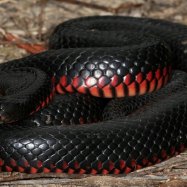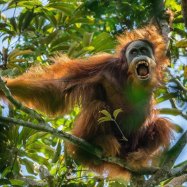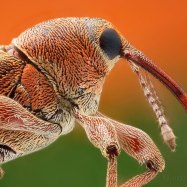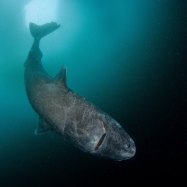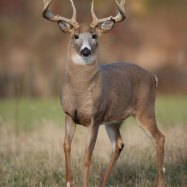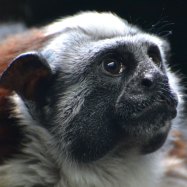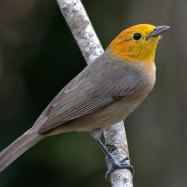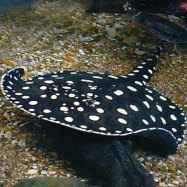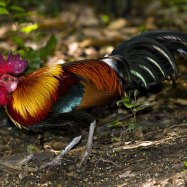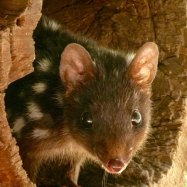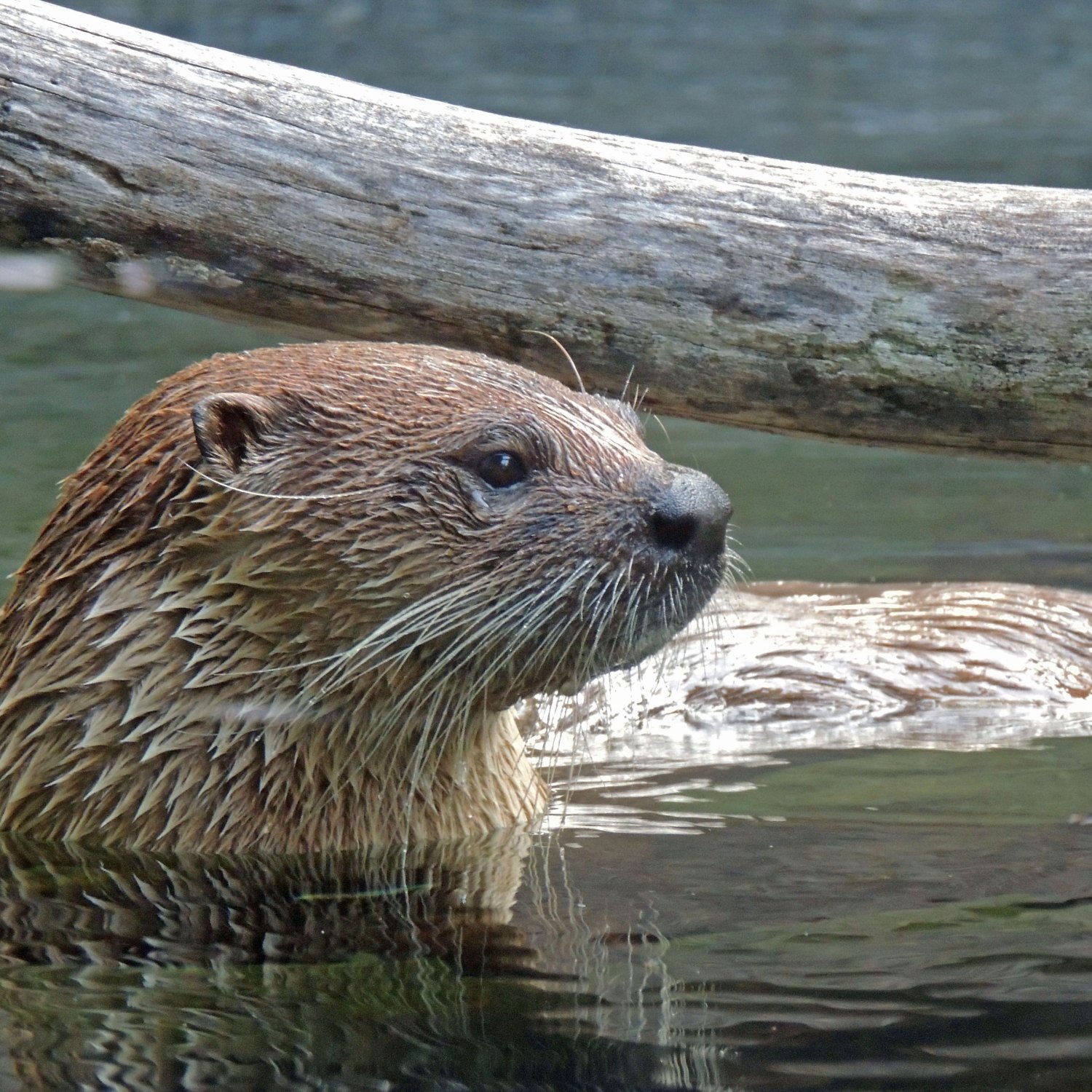
River Otter
87-153 cm (34-60 inches)
The North American River Otter, a member of the Mustelidae family, is a fascinating aquatic mammal with a slender and streamlined body. Growing up to 87-153 cm (34-60 inches) in length, it is a skilled swimmer and can hold its breath underwater for up to 8 minutes. Found on the North American continent, this playful and intelligent animal is a must-see for any wildlife enthusiasts.
Animal Details Summary:
Common Name: River Otter
Kingdom: Animalia
Habitat: Rivers, lakes, wetlands, and coastal areas
The Fascinating World of River Otters: The Charmers of North America
The animal kingdom is full of creatures that are incredibly unique and fascinating in their own ways. Among them are the charming and playful River Otters, also known as Lontra canadensis in the scientific community. These adorable animals belong to the Kingdom Animalia, Phylum Chordata, and Class Mammalia. They are also part of the Carnivora Order and Mustelidae family, making them closely related to other mustelids such as badgers and weasels River Otter. River Otters thrive in various habitats, including rivers, lakes, wetlands, and coastal areas, making them highly adaptable creatures. However, their geographical distribution is primarily limited to North America and parts of South America. Today, we will dive into the world of these fascinating mammals and discover what makes them so special.The Habitat of River Otters
River Otters are semiaquatic mammals, which means they spend most of their time in and around water. They can be found in various aquatic environments, including rivers, lakes, wetlands, and coastal areas. However, they prefer freshwater habitats, making them more commonly found in lakes and rivers. These habitats provide a plentiful source of food for these creatures, and their excellent swimming abilities allow them to thrive in such environments.The Diet of River Otters
Being carnivores, River Otters primarily feed on fish, crustaceans, and other small aquatic animals such as frogs, snails, and crayfish. They are opportunistic hunters and can adapt their diet based on the availability of food in their habitat Redtail Catfish. These creatures are skilled fishermen, using their excellent swimming abilities and sharp claws to catch their prey. They are also known to forage on land, hunting for small rodents and birds.The Geographical Distribution of River Otters
River Otters are native to North America and can be found in most parts of the continent, including the United States, Canada, and Mexico. They are also found in some parts of South America, mainly in Chile and Argentina. They prefer colder climates, making Canada their country of origin and the ideal location for their natural habitat. However, due to their adaptable nature, they have spread to different regions, including warmer areas in the southern United States.The Physical Appearance of River Otters
River Otters are easily recognizable with their dark brown fur and a lighter underbelly. This coloration serves as camouflage, allowing them to blend in with their surroundings while hunting for prey. They have a slender and streamlined body shape, which makes them excellent swimmers. Their webbed feet and thick tails help them propel through the water at high speeds, reaching up to 11 miles per hour. These impressive physical features make them the perfect aquatic hunters.The Size and Weight of River Otters
On average, River Otters can grow from 87-153 cm (34-60 inches) in length and weigh 5-14 kg (11-31 lbs). The size and weight of River Otters vary depending on their location and access to resources. Otters living in colder climates tend to be bigger and bulkier, while those found in warmer regions tend to be smaller and lighter. Their weight also fluctuates depending on the availability of food, as they are known to gain weight during the winter months to keep warm.The Social Behavior of River Otters
River Otters are highly social animals and usually live in small groups called "rafts." These rafts consist of a dominant adult male, a few adult females, and their offspring. They have strong bonds with their family members and often communicate using various vocalizations, including chirps, chatters, and whistles. They are also playful creatures and can be spotted sliding down snowy hills or playing with objects found in their surroundings. Their playful and social nature makes them a delight to watch for wildlife enthusiasts.The Reproduction of River Otters
The reproductive behavior of River Otters is fascinating and unique. They are known for their polygynous mating system, in which one dominant male mates with multiple females within his territory. Female otters give birth to litters consisting of one to six pups, which they raise in a den. These pups are born with a full coat of fur and are dependent on their mothers for the first four months of their lives. After that, they start accompanying their parents on hunting trips before leaving their family groups at the age of one.The Role of River Otters in the Ecosystem
River Otters play a vital role in maintaining the balance of aquatic ecosystems. They are top predators and help control the population of their prey, ensuring that they do not destroy their habitats. Their presence also indicates that the water bodies they inhabit are healthy and able to sustain a diverse range of wildlife. Additionally, the burrows and dens they create provide shelter for other animals, such as muskrats and beavers. These creatures serve as an essential link in the food chain and contribute to the overall health of the ecosystem.The Threats Faced by River Otters
Despite their adaptability and essential role in the ecosystem, River Otters have faced several threats that have endangered their species. In the 19th and 20th centuries, they were nearly extirpated from their natural habitat due to unregulated hunting and trapping for their valuable fur. However, efforts to restore their population through conservation and reintroduction programs have been successful, and their numbers have significantly increased in recent years. Additionally, pollution, habitat destruction, and declining water quality are ongoing concerns for the River Otter population.The Protection of River Otters
The decline in the River Otter population has raised concern among conservationists, leading to their protection under various laws and regulations. In the United States and Canada, they are under the protection of the Marine Mammal Protection Act, which prohibits hunting, killing, and harassment of these creatures. Several states, such as Illinois, Pennsylvania, and Washington, have also designated them as threatened or endangered species, and it is illegal to harm or disturb these animals in any way.Responsible Viewing of River Otters
For animal lovers and wildlife enthusiasts, viewing River Otters in their natural habitat can be a delightful experience. However, it is essential to observe these creatures responsibly to avoid causing them harm. If you spot a River Otter in the wild, it is crucial to keep a distance and avoid approaching, feeding, or disturbing them. This helps prevent any stress or danger to both the otters and humans. It is also vital to remember that these creatures are wild animals and should not be kept as pets.In conclusion, the River Otter is a fascinating and charming creature that plays a crucial role in maintaining the balance of aquatic ecosystems in North America. Their adaptability, social behavior, and remarkable physical abilities make them a unique addition to the animal kingdom. While they have faced many threats in the past, conservation efforts have successfully increased their population, making them a delightful sight for wildlife enthusiasts. As we continue to protect and conserve their natural habitats, we can continue to admire and learn from these charming creatures of North America.

River Otter
Animal Details River Otter - Scientific Name: Lontra canadensis
- Category: Animals R
- Scientific Name: Lontra canadensis
- Common Name: River Otter
- Kingdom: Animalia
- Phylum: Chordata
- Class: Mammalia
- Order: Carnivora
- Family: Mustelidae
- Habitat: Rivers, lakes, wetlands, and coastal areas
- Feeding Method: Carnivorous
- Geographical Distribution: North America and parts of South America
- Country of Origin: Canada
- Location: North American continent
- Animal Coloration: Dark brown with a lighter underbelly
- Body Shape: Slender and streamlined
- Length: 87-153 cm (34-60 inches)
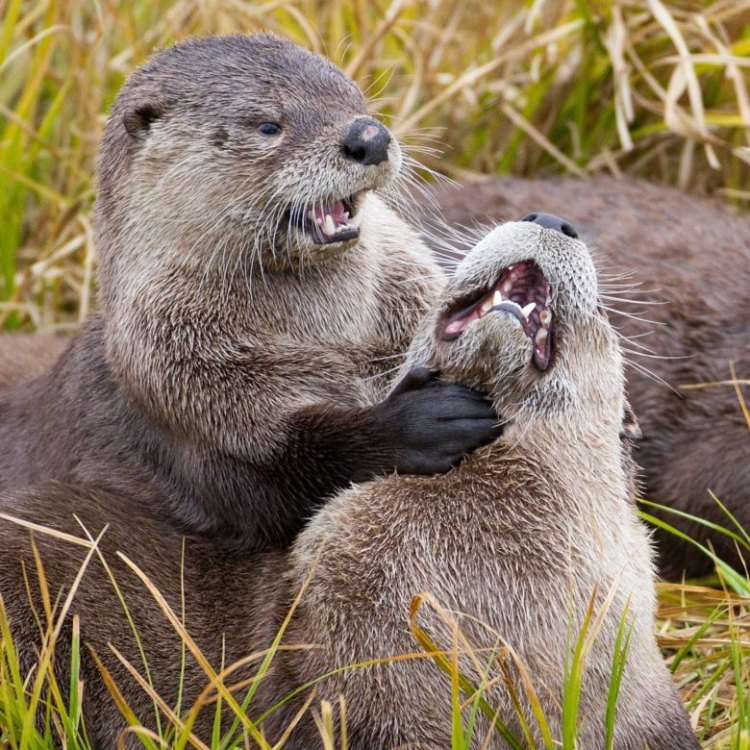
River Otter
- Adult Size: 10-30 lbs (4.5-14 kg)
- Average Lifespan: 8-9 years
- Reproduction: Sexual
- Reproductive Behavior: Males engage in vigorous courtship displays
- Sound or Call: Whistles, chirps, and growls
- Migration Pattern: Some populations migrate
- Social Groups: Family groups
- Behavior: Playful, active, and social
- Threats: Habitat loss, pollution, trapping
- Conservation Status: Least Concern
- Impact on Ecosystem: Keystone species in aquatic ecosystems
- Human Use: Trapping for fur in the past, now protected
- Distinctive Features: Webbed feet for swimming, long tail
- Interesting Facts: River otters can stay underwater for up to 8 minutes
- Predator: Few natural predators
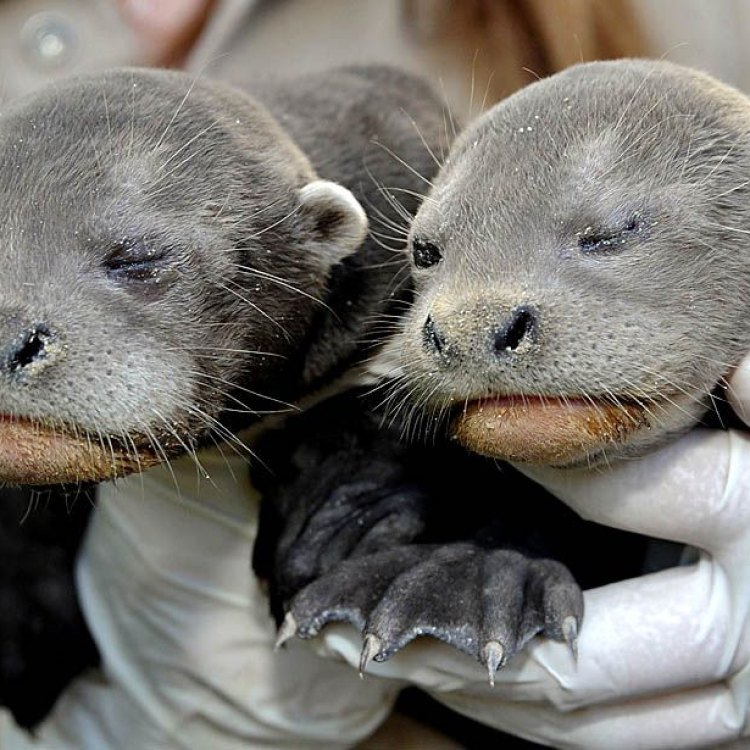
Lontra canadensis
The Charismatic and Playful River Otter: A Keystone Species in Aquatic Ecosystems
The river otter, scientifically known as Lontra Canadensis, is a semiaquatic mammal found in North America. With its charming and playful behavior, the river otter has captured the hearts of many and is a popular sight in its natural habitat.Adult river otters typically weigh between 10-30 pounds (4.5-14 kg) and have an average lifespan of 8-9 years PeaceOfAnimals.Com. The females are slightly smaller than males, weighing between 10-20 pounds (4.5-9 kg). They have elongated, streamlined bodies with thick fur, webbed feet, and a long tapered tail that can account for almost a third of their total length.
These furry creatures are widely distributed throughout North America, with a range that includes Canada, the United States, and parts of Mexico. They prefer freshwater habitats, including rivers, streams, lakes, and wetlands, although they have also adapted to living in coastal habitats.
Sexual reproduction is the primary mode of reproduction for river otters. Mating usually occurs in late winter or early spring, with a gestation period of about two months. Males are known for their vigorous courtship displays, including playful chasing and wrestling, to attract females. After birth, the female river otters take care of their young, called "pups," for the first year of their lives Robber Flies.
One of the most distinctive features of river otters is their ability to stay underwater for extended periods. They have large lungs and a slow metabolism, allowing them to slow their heart rate and conserve oxygen while diving. They can hold their breath for up to 8 minutes and swim at speeds of up to 7 miles per hour.
Apart from their remarkable diving ability, river otters also communicate with each other using a variety of sounds, including whistles, chirps, and growls. These vocalizations serve as a way to communicate with other otters and convey information about their location and readiness for mating.
River otters are highly social creatures and are often found in family groups or "rafts" of around six individuals. These family groups have a defined hierarchy, with a dominant male and female leading the group. They are also known for their playful nature, often seen chasing each other, sliding down muddy banks, and even playing with rocks or using their webbed feet to toss objects in the air.
Unfortunately, river otters face several threats in their natural habitats. Habitat loss due to human activities, such as dam construction and urbanization, is a significant concern for their survival. Additionally, pollution and oil spills can contaminate water, making it unsuitable for these sensitive creatures.
Historically, river otters faced threats from trapping for their luxurious fur, which led to a significant decline in their populations. However, since the 1970s, there have been strict laws and regulations put in place to protect these charismatic creatures. As a result, their populations have rebounded in many areas. Today, the International Union for Conservation of Nature (IUCN) lists the river otter as a species of Least Concern.
Apart from being adorable and essential members of their ecosystems, river otters also serve as a keystone species. This means that they play a vital role in maintaining the balance of their habitat. As top predators, river otters control the population of their prey, such as fish, frogs, and crayfish. This helps to prevent overgrazing, which can lead to harmful algal blooms and affect the entire aquatic food web.
Their presence also has a positive impact on the physical structure of their habitat. By digging dens in riverbanks, river otters create small ponds that provide shelter for many other species, including fish, insects, amphibians, and birds. These small changes in the landscape can have a significant impact on the overall health of the ecosystem.
Humans have a long history of using river otters for their fur. In the past, they were hunted heavily for their dense and luxurious coats, which were used to make fur hats and coats. However, with increased protection and conservation efforts, river otters are now mainly used for their ecological and tourism value. The opportunity to observe these playful creatures in their natural habitat has become a significant economic asset for many communities.
In conclusion, river otters are fascinating and charming creatures with a vital role in maintaining the health and balance of their ecosystems. With their playful and active behavior, they have become a beloved symbol of healthy freshwater habitats. However, it is crucial to continue efforts to protect and conserve their populations and their habitats for future generations to enjoy. So, if you're lucky enough to spot a river otter in its natural habitat, take a moment to appreciate its unique features and remember the important role it plays in its ecosystem.
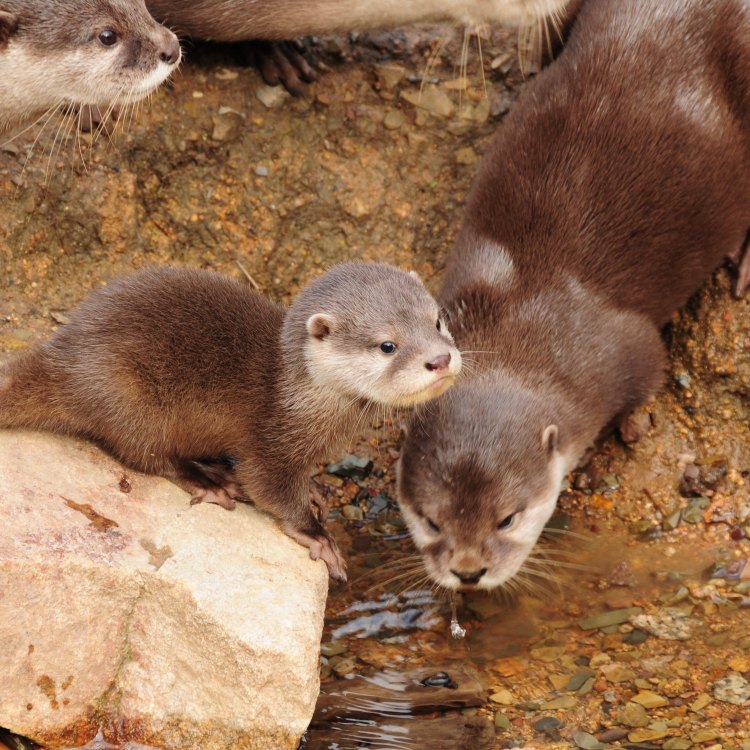
The Fascinating World of River Otters: The Charmers of North America
Disclaimer: The content provided is for informational purposes only. We cannot guarantee the accuracy of the information on this page 100%. All information provided here may change without prior notice.

